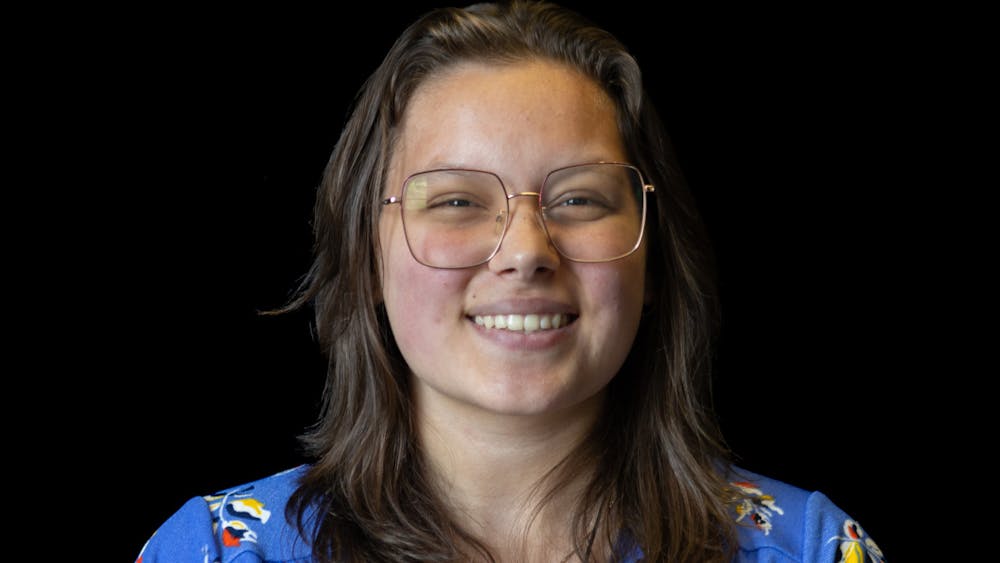COLUMN: Guidelines on reporting tragedy
While our campus mourns the death of freshman Ryan Tsatsos, it is the job of the student media to serve the public interest by reporting the truth of what happened on that tragic Halloween night.
Understanding the role of student media as it covers tragedy has been difficult for some students. As Editor-in-Chief, I am a facilitator of this coverage. I wanted to open a discussion about how Central Michigan Life reports on death investigations.
When the media isn’t careful, reporting on death can do significant harm. One of the most important sections of the Society of Professional Journalists' Code of Ethics is regarding our responsibility to minimize harm.
The first way we can do this is by being accurate. In the early stages of our reporting there were several facts that needed to be delivered to the community after they were confirmed by official sources. When we verify with local law enforcement or Central Michigan University administrators that a death investigation is in progress we quickly inform the community. Verification of our reporting is one of the most important things we do.
In the first moments that the news of the hit and run accident broke, there was much confusion that accompanied the pain and grief.
As a rule, we don’t report rumors or secondary reports from social media or other news outlets, no matter how prevalent these reports are. Incorrect information makes a situation worse.
Another point made in the SPJ code charges journalists to show compassion for those who may be affected by news coverage. Unlike public figures, such as celebrities, we are taught to realize that private people have a greater right to control information about themselves. When a student dies, unprepared family and friends are immediately thrust into the public spotlight.
We do not ambush students for interviews. We do not harass friends or family for comment.
But we do offer them a forum.
If they wish, we do speak with them because many family and friends realize the death of a student affects the university community and the ensuing grief reaches everyone.
Many students have asked in recent days why we report the names of students who have died, even when their family members may prefer privacy. In this particular instance, Central Michigan Life weighed the consequences of publishing unverified information versus waiting for confirmation in discussions throughout the night.
After Tsatsos' name began to circulate on social media, it became obvious that he was the student who was killed. However, the only two sources that could confirm this were Michigan State Police or his parents. Other publications, including local newspaper The Morning Sun and several publications in or near Tsatsos’ home in Macomb County, decided that social media posts were confirmation enough.
We tried to get proper verification. We were able to find information about Ryan’s family and I personally spoke with Tsatsos' father Paul on Sunday. I asked him if he was comfortable with Central Michigan Life identifying Ryan in our story and if he would like to make any statements to the CMU community. He initially agreed to let us publish Ryan's name, but declined to speak on the record. After we had an update typed up, he contacted me again and changed his mind. Then he asked us not to publish his son's identity.
I do not know what other publications might have done. I know that it would be wrong to betray Paul’s trust by publishing the information he confirmed.
We have an obligation to respectfully seek comment from family and friends. Though we understand that grieving family members may not want to speak to the media, speaking with us also gives them a chance to contribute to the story on their own terms.
Other media outlets also reported that Ryan pushed another student out of the way of the car before he was hit. We didn’t include that information in our initial story because it was speculation that had not been confirmed by Michigan State Police, who were still conducting interviews with witnesses. We again waited for verification and when investigators were able to substantiate that information we included in our coverage.
On Monday, we sent Managing Editor Sydney Smith to Merrill Hall to meet with students. Some declined to be interviewed. Others decided to share their feelings with us and several nearby television stations. She attended Tsatsos' private viewing on Wednesday and has privately interviewed the family.
Central Michigan Life will continue to follow this story from several angles: Police efforts to arrest the driver who is still at large, Union Township's responsibility to make streets south of campus safe for pedestrians and the impact of losing a friend on students at CMU.
Editors and reporters who report these stories follow these guidelines and understand the magnitude of tragedy.
Being first with information is a good goal to have. Publishing accurate information is our mission.
For more information, please contact Malachi Barrett at editor@cm-life.com







